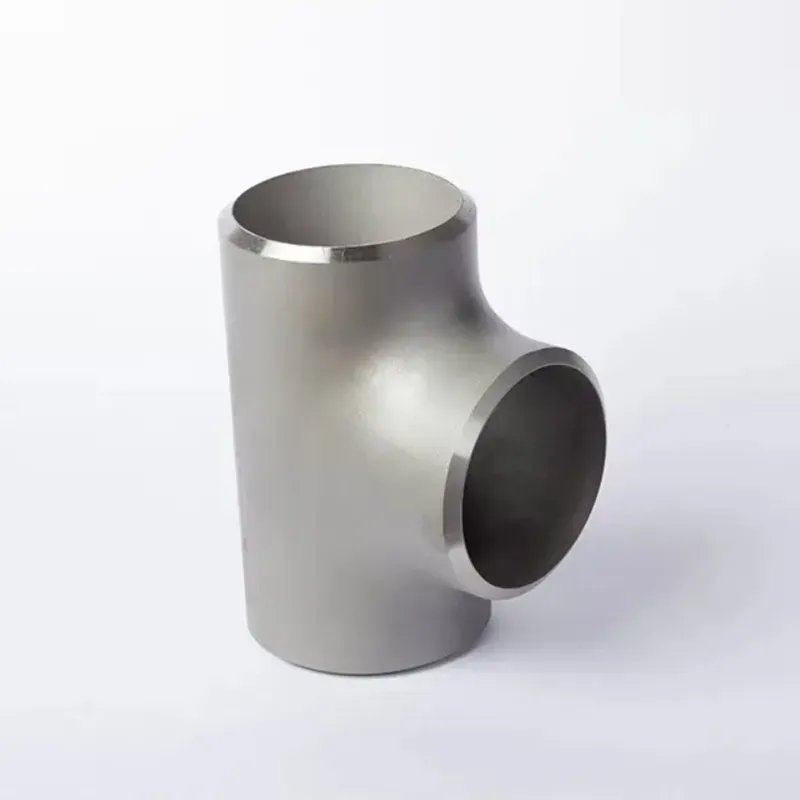-
Cangzhou Yulong Steel Co., Ltd.
-
Phone:
+86 13303177267 -
Email:
admin@ylsteelfittings.com
- English
- Arabic
- Italian
- Spanish
- Portuguese
- German
- kazakh
- Persian
- Greek
- French
- Russian
- Polish
- Thai
- Indonesian
- Vietnamese
- Zulu
- Korean
- Uzbek
- Hindi
- Serbian
- Malay
- Ukrainian
- Gujarati
- Haitian Creole
- hausa
- hawaiian
- Hebrew
- Miao
- Hungarian
- Icelandic
- igbo
- irish
- Japanese
- Javanese
- Kannada
- Khmer
- Rwandese
- Afrikaans
- Albanian
- Amharic
- Armenian
- Azerbaijani
- Basque
- Belarusian
- Bengali
- Bosnian
- Bulgarian
- Catalan
- Cebuano
- China
- China (Taiwan)
- Corsican
- Croatian
- Czech
- Danish
- Esperanto
- Estonian
- Finnish
- Frisian
- Galician
- Georgian
- Kurdish
- Kyrgyz
- Lao
- Latin
- Latvian
- Lithuanian
- Luxembourgish
- Macedonian
- Malgashi
- Malayalam
- Maltese
- Maori
- Marathi
- Mongolian
- Myanmar
- Nepali
- Norwegian
- Norwegian
- Occitan
- Pashto
- Dutch
- Punjabi
- Romanian
- Samoan
- Scottish Gaelic
- Sesotho
- Shona
- Sindhi
- Sinhala
- Slovak
- Slovenian
- Somali
- Sundanese
- Swahili
- Swedish
- Tagalog
- Tajik
- Tamil
- Tatar
- Telugu
- Turkish
- Turkmen
- Urdu
- Uighur
- Welsh
- Bantu
- Yiddish
- Yoruba

Dec . 04, 2024 10:14 Back to list
seamless steel pipe sizes
Understanding Seamless Steel Pipe Sizes
Seamless steel pipes have become an essential component in various industries, including oil and gas, construction, and manufacturing. Their strength, durability, and ability to withstand high pressures make them a preferred choice for many applications. A critical aspect to consider when selecting seamless steel pipes is the size, which affects their performance, compatibility, and overall efficiency in a system.
What is Seamless Steel Pipe?
Seamless steel pipes are made from a solid round steel billet, which is heated and then pierced to create a hollow tube. This manufacturing process results in a pipe without any welds, making it stronger and more reliable than welded pipes. The absence of seams helps reduce the likelihood of failure under high pressure, making seamless pipes ideal for transporting fluids and gases in high-stress environments.
Standard Sizes of Seamless Steel Pipes
Seamless steel pipes are produced in various sizes, classified primarily by their outer diameter (OD) and wall thickness (WT). The most widely used standards for seamless pipe sizes are governed by the American National Standards Institute (ANSI), the American Society for Testing and Materials (ASTM), and the International Organization for Standardization (ISO).
1. Nominal Pipe Size (NPS) This refers to the diameter of the pipe, with sizes typically ranging from 1/8 inch to 80 inches. However, most common sizes for seamless pipes are between 1 inch to 12 inches in diameter. The NPS does not always correlate directly with the actual outer diameter, so it is crucial to refer to specific size charts for accurate measurements.
2. Pipe Schedules Pipe size is also defined by its schedule, which indicates the wall thickness. Schedule numbers include options like Schedule 40, Schedule 80, and so on. For example, a 2-inch nominal size pipe in Schedule 40 has a wall thickness of approximately 0.154 inches, while the same pipe in Schedule 80 has a wall thickness of about 0.218 inches. The thicker the wall, the higher the pressure that the pipe can withstand.
3. Pipe Diameter The outer diameter of seamless steel pipes typically has standard increments. For instance, common outer diameters include 0.840 inches for a 1/2-inch NPS pipe and 12.750 inches for a 12-inch NPS pipe. Understanding the outer diameter is critical for ensuring compatibility with fittings and connections in piping systems.
seamless steel pipe sizes

4. Length While seamless pipes can be cut to different lengths, they are usually supplied in standard lengths of 20 feet or 40 feet. However, customization is often available depending on the manufacturer and the specific needs of the project.
Importance of Choosing the Right Size
Selecting the correct size of seamless steel pipe is crucial for several reasons
- Pressure Requirements The size and thickness of the pipe directly influence its ability to handle pressure. Larger pipelines are generally designed for higher volumes and pressures, while smaller pipes are suitable for lower pressure applications.
- Flow Efficiency A properly sized pipe ensures optimal flow rates within a system. If the pipe is too narrow, it can restrict flow and cause pressure drops, whereas an oversized pipe may lead to turbulence and inefficiencies.
- Compatibility Seamless pipes must fit properly with existing systems, including valves, fittings, and flanges. Ensuring that the dimensions match is essential for maintaining system integrity and avoiding leaks.
Conclusion
Seamless steel pipe sizes play a vital role in the performance and reliability of piping systems across various industries. Understanding the standards and specifications related to nominal pipe sizes, schedules, and material properties is essential for engineers and procurement professionals. By selecting the appropriate seamless steel pipe sizes, organizations can ensure safety, efficiency, and longevity in their piping systems, ultimately supporting smooth operations in their respective fields. As industries continue to evolve, staying informed about the latest developments in pipe technology and sizing will be critical for meeting the ever-increasing demands of modern infrastructure.
Latest news
-
ANSI 150P SS304 SO FLANGE
NewsFeb.14,2025
-
ASTM A333GR6 STEEL PIPE
NewsJan.20,2025
-
ANSI B16.5 WELDING NECK FLANGE
NewsJan.15,2026
-
ANSI B16.5 SLIP-ON FLANGE
NewsApr.19,2024
-
SABS 1123 FLANGE
NewsJan.15,2025
-
DIN86044 PLATE FLANGE
NewsApr.19,2024
-
DIN2527 BLIND FLANGE
NewsApr.12,2024
-
JIS B2311 Butt-Welding Fittings LR/SR 45°/90° /180°Seamless/Weld
NewsApr.23,2024











